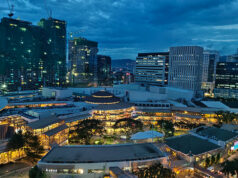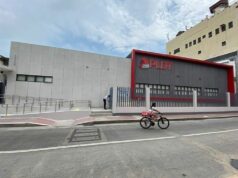THE GOVERNMENT’S fiscal position swung back to a deficit in May as the growth in expenditures outpaced revenue expansion, it reported on Friday.
In a statement, the Bureau of the Treasury said last month’s budget deficit came in at P33.4 billion, wider than the P17.7-billion gap logged in the May 2016 and a reversal of April’s P52.7-billion surplus.
Government expenditures in May grew by 20% to P261.7 billion from P217.4 billion in the same month last year.
Budget Undersecretary Laura B. Pascua said the stronger spending was due to the mid-year bonuses shelled out in May, as well as back-to-school-related disbursements.
“That would have been due to the midyear bonus, the implementation of the 4Ps (Pantawid Pamilyang Pilipino Program), DoH (Department of Health) projects and the DepEd (Department of Education) programs given the opening of school,” she said in a mobile phone message on Friday.
“We comprehensively released mid-year bonus [of] P32.6 billion for civilian and military and uniformed personnel, equivalent to one month salary,” she added.
Broken down, interest payments for the month stood at P21 billion, growing 12% from last year “due to timing of payment for Treasury bonds scheduled in April but paid in May.”
Other spending increased 21% to P240.7 billion last month from P198.8 billion in May 2016.
Meanwhile, revenues expanded by 14% to P228.3 billion in May from P199.8 billion in the same month last year.
Tax revenues collected by the Bureau of Internal Revenue (BIR), Bureau of Customs (BoC) and other offices came in at P201 billion, up 9% from P185.1 billion the year previous.
The BIR raked in P158.7 billion during the month, rising 5% from the P151.6 billion it booked in May 2016, while the BoC’s collections grew 23% to P39.6 billion from P32.1 billion. Other offices collected the rest of the tax revenues.
On the other hand, non-tax revenues increased by 86% to P27.3 billion in May from P14.7 billion in 2016.
“Bulk of revenue growth for the month of May can be attributed to non-tax revenues, particularly the Bureau of the Treasury’s (BTr) income…as remittance of dividends on share/stock holdings of the government from GOCCs (government-owned and -controlled corporations) started to come in,” the Treasury said. BTr’s income expanded by 214% during the month to P18 billion from P5.7 billion the year prior.
May’s budget deficit widened the five-month gap to P63.6 billion, although this was still 15% lower than the P75.1-billion shortfall seen in January-May 2016.
Expenditures for the first five months totalled P1.06 trillion, 6% more than the P1 trillion spent in the same period last year.
Meanwhile, revenues grew by 8% to P996.5 billion from P925.4 billion previously. Tax revenues from January to May rose 10% to P900.8 billion, while non-tax revenues fell 7% to P95.7 billion.
CAPACITY
Still, Bank of the Philippine Islands lead economist Emilio S. Neri, Jr. said the pickup in spending seen in May signalled the government’s capacity to execute its massive infrastructure drive, which may lead to faster economic growth for the second quarter.
“I think the much stronger outlays in May can ease some of the concerns that government agencies have limited capacity to absorb funds. It also eases some of the doubts about the ability of new government to carry out its vision of a “Golden Age of Infrastructure” in the next five years,” he said via e-mail.
“A pick up in government outlays in 2Q2017 (second quarter 2017) may lead to a faster GDP (gross domestic product) growth print than the somewhat disappointing 1Q2017 (first quarter 2017) print of 6.4%,” he added.
Budget Secretary Benjamin E. Diokno said in a text message: “The disbursement rate in May is indicative of better performance, but it’s not yet our best.”
Mr. Diokno said base effects from accelerated spending rates last year — due to election-related disbursements — is still evident in the end-May expenditure tally.
“We at the DBM are constantly monitoring the disbursement rates of all agencies. The disbursement rate from January to April this year might appear to be marginally higher than the comparative period last largely because of base effects: 2016 was a presidential election year,” he said in a mobile phone reply on Friday.
“Also, it is reflective of the ‘learning-by-doing’ process. 2016 was [Benigno S.C.] Aquino’s final year in office while 2017 was [President Rodrigo R.] Duterte’s first,” he added.
The government is looking at a wider deficit ceiling at 3% of GDP annually starting 2017, as it plans to drastically raise spending, particularly on infrastructure.
For this year, the budget shortfall is programmed at P482.1 billion. In 2016, the government posted a P353.4-billion deficit, which was equivalent to 2.4% of GDP. — E.J.C. Tubayan



